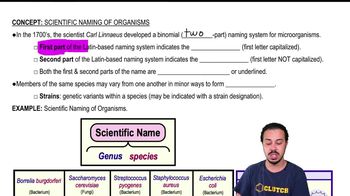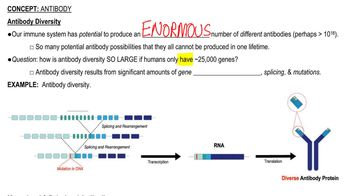Here are the essential concepts you must grasp in order to answer the question correctly.
Taxonomy
Taxonomy is the science of classifying organisms into hierarchical categories based on shared characteristics. It includes various ranks such as domain, kingdom, phylum, class, order, family, genus, and species. Understanding taxonomy is essential for identifying the different phyla represented by the organisms listed in the question.
Recommended video:
Phyla of Organisms
A phylum is a major taxonomic category that groups together organisms sharing a fundamental body plan or significant structural features. For example, Echinococcus and Taenia belong to the phylum Platyhelminthes, while Aspergillus is classified under the phylum Ascomycota. Recognizing the phyla of the listed organisms is crucial for determining how many distinct groups are represented.
Recommended video:
Scientific Naming of Organisms
Diversity of Life Forms
The diversity of life forms refers to the variety of different organisms that exist within various ecosystems, including their classification into different phyla. This diversity is important for understanding ecological relationships and evolutionary biology. In the context of the question, recognizing the diversity among the listed organisms helps in accurately counting the number of phyla represented.
Recommended video:




